HP HPE6-A79 - Aruba Certified Mobility Expert Written Exam
A network administrator assists with the migration of a WLAN from a third-party vendor to Aruba in different locations throughout the country. In order to manage the solution from a central point, the network administrator decides to deploy redundant Mobility Masters (MMs) in a datacenter that are reachable through the Internet.
Since not all locations own public IP addresses, the security team is not able to configure strict firewall polices at the datacenter without disrupting some MM to Mobility Controller (MC) communications. They are also concerned about exposing the MMs to unauthorized inbound connection attempts.
What should the network administrator do to ensure the solution is functional and secure?
An Aruba Mobility Master (MM) - Mobility Controller (MC) solution is connected to a wired network that is ready to prioritize DSCP marked traffic. A group of WMM-enabled clients sends traffic marked at L2 only.
What must the network administrator do to map those markings to DSCP equivalent values when traffic is received by the APs?
A network administrator has updated the ArubaOS code of a standalone Mobility Controller (MC) that is used for User-Based Tunneling (UBT) to a newer early release. Ever since the MC seems to reject PAPI sessions from the switch with the 10.1.10.10 IP address. Also the controller’s prompt is now followed by a star mark: “(MC_VA) [mynode] *#â€
When opening a support ticket, an Aruba TAC engineer asks the administrator to gather the crash logs and if possible replicate UBT connection attempts from the switch while running packet captures of PAPI traffic on the controller and obtain the PCAP files. The administrator has a PC with Wireshark and TFTP server using the 10.0.20.20 IP address.
What commands must the administrator issue to accomplish these requests? (Choose two.)
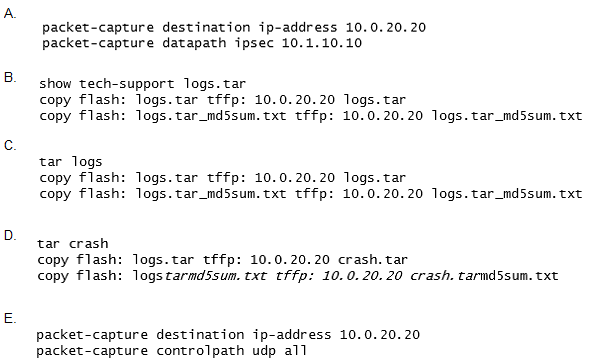
Refer to the exhibit.
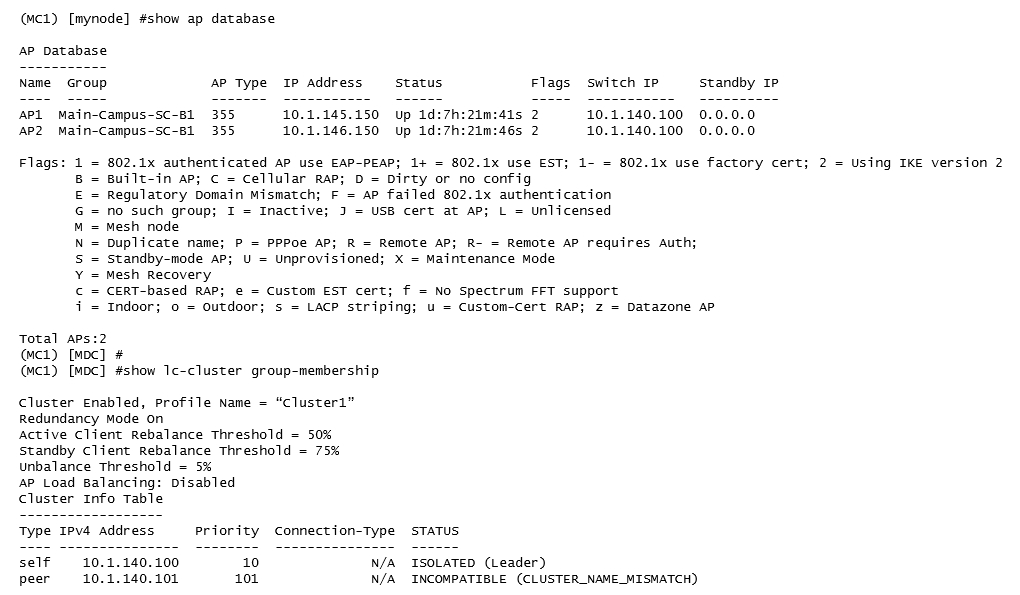
After deploying several cluster pairs, the network administrator notices that all APs assigned to Cluster1 communicate with MC1 instead of being distributed between members of the cluster. Also, no IP addresses are shown under the Standby IP column.
What should the network administrator do to fix this situation?
Refer to the exhibit.
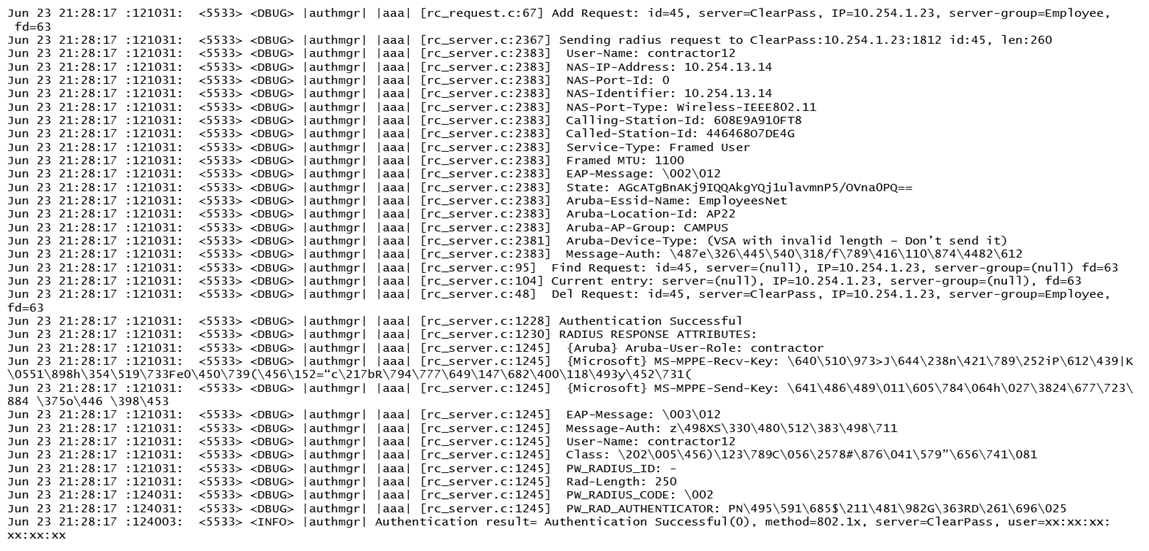
A network administrator wants to allow contractors to access the WLAN named EmployeesNet. In order to restrict network access, the network administrator wants to assign this category of users to the contractor user role. To do this, the network administrator configures ClearPass in a way that it returns the Aruba-User-Role with the contractor value.
When testing the solution, the network administrator receives the wrong role.
What should the network administrator do to assign the contractor role to contractor users without affecting any other role assignment?
A joint venture between two companies results in a fully functional WLAN Aruba solution. The network administrator uses the following script to integrate the WLAN solution with two radius servers, radius1 and radius2.
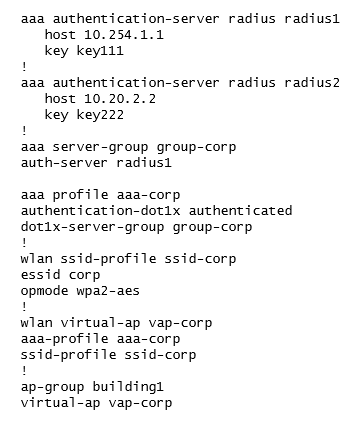
While all users authenticate with username@domainname.com type of credentials, radius1 has user accounts with the domain name portion.
Which additional configuration is required to authenticate corp1.com users with radius1 and corp2 users with radius2?
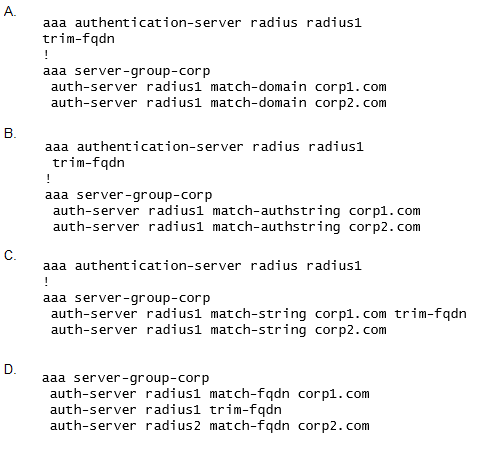
Refer to the exhibits.
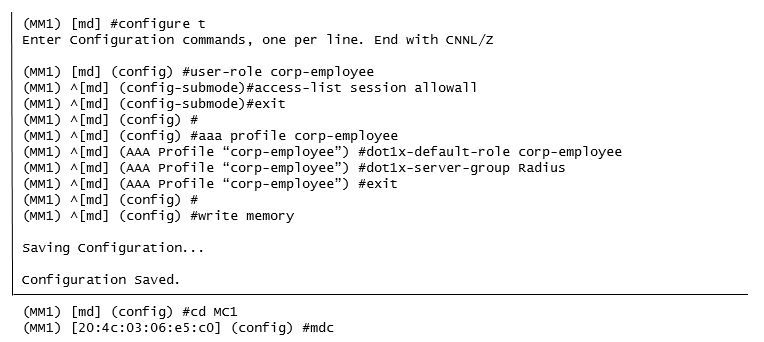

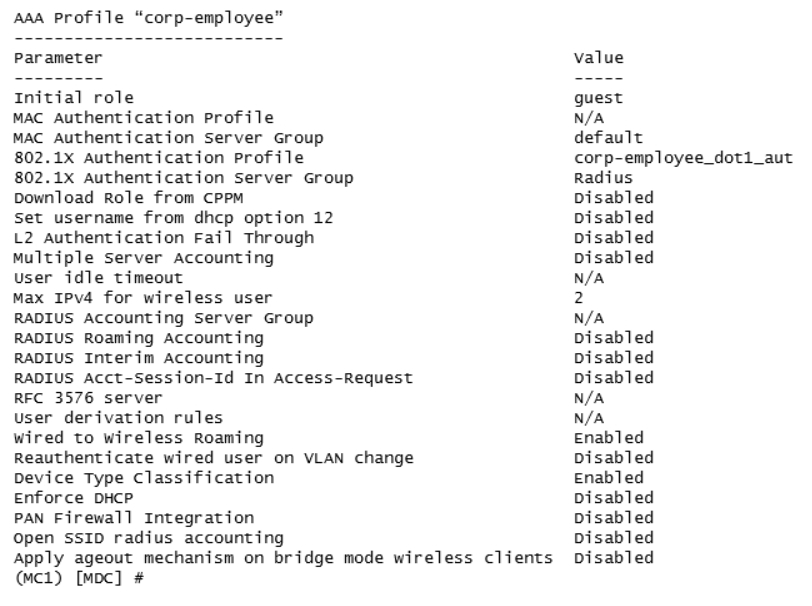
A network administrator has fully deployed a WPA3 based WLAN with 802.1X authentication. Later he defined corp-employee as the default user-role for the 802.1X authentication method in the aaa profile. When testing the setup he realizes the client gets the “guest†role.
What is the reason “corp-employee†user role was not assigned?
Refer to the exhibit.
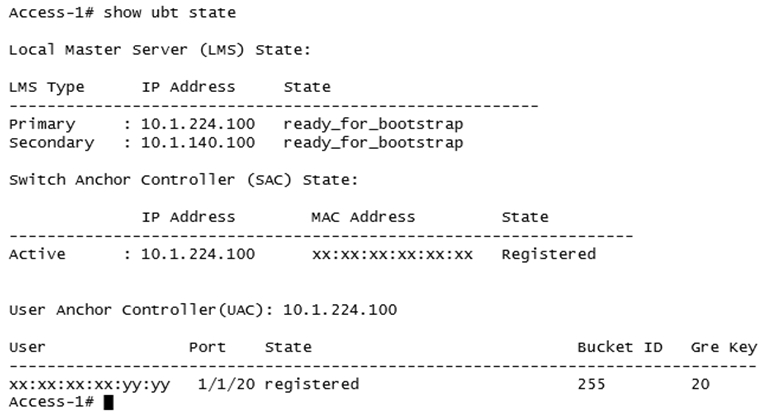
Based on the output shown in the exhibit, with which Aruba devices has Access-1 established tunnels?
Refer to the exhibit:
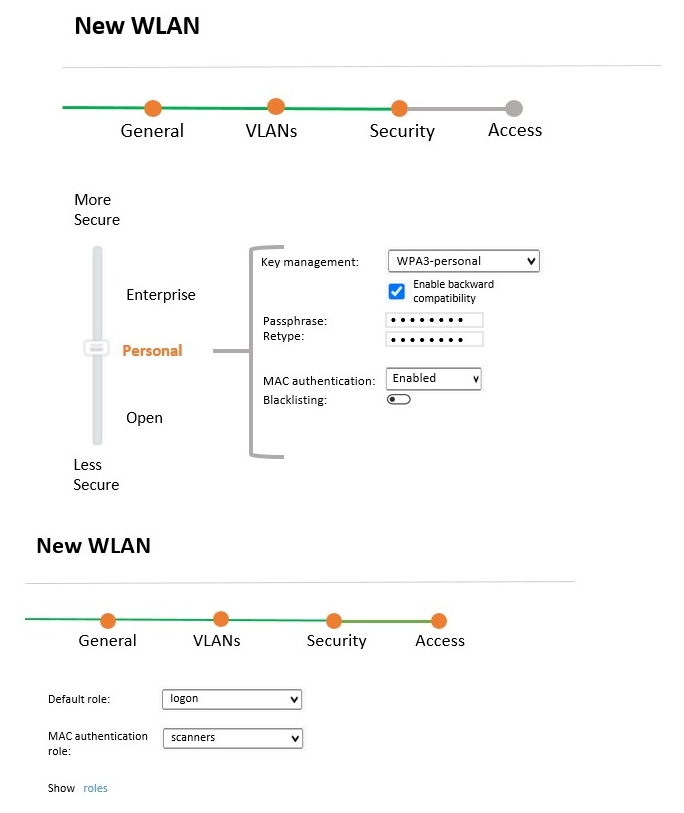
A company acquires ten barcode scanners to run inventory tasks. These WiFi devices support WPA2-PSK security only. The network administrator deploys a WLAN named scanners using the configuration shown in the exhibit.
What must the network administrator do next to ensure that the scanner devices successfully connect to their SSID?
A company with 535 users deploys an Aruba solution with more than 1000 Aruba APs, two 7220 Mobility Controllers, and a single Mobility Master (MM) virtual appliance at the campus server farm. The MCs run a HA Fast failover group in dual mode and operate at 50% AP capacity.
If there is an MM or MC failure, the network administrator must ensure that the network is fully manageable and the MC load does not exceed 80%.
What can the network administrator do to meet these requirements?



